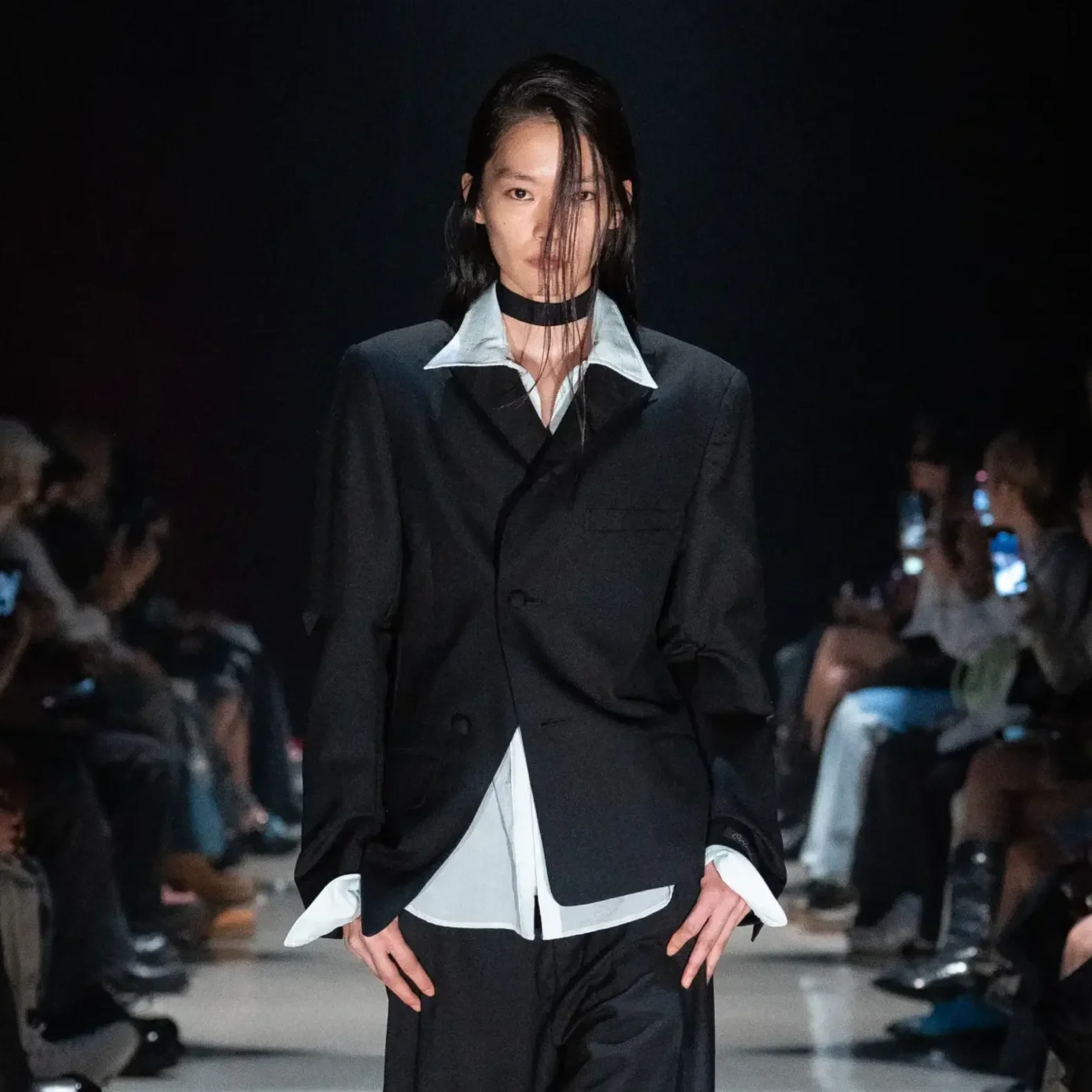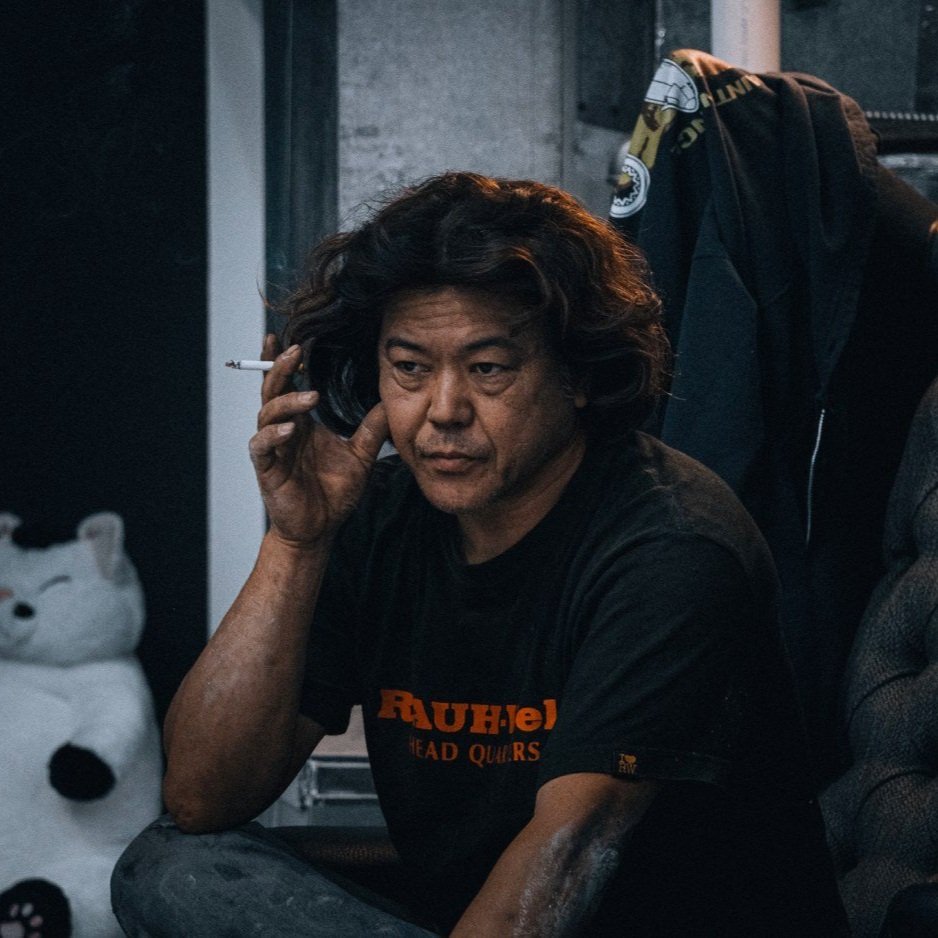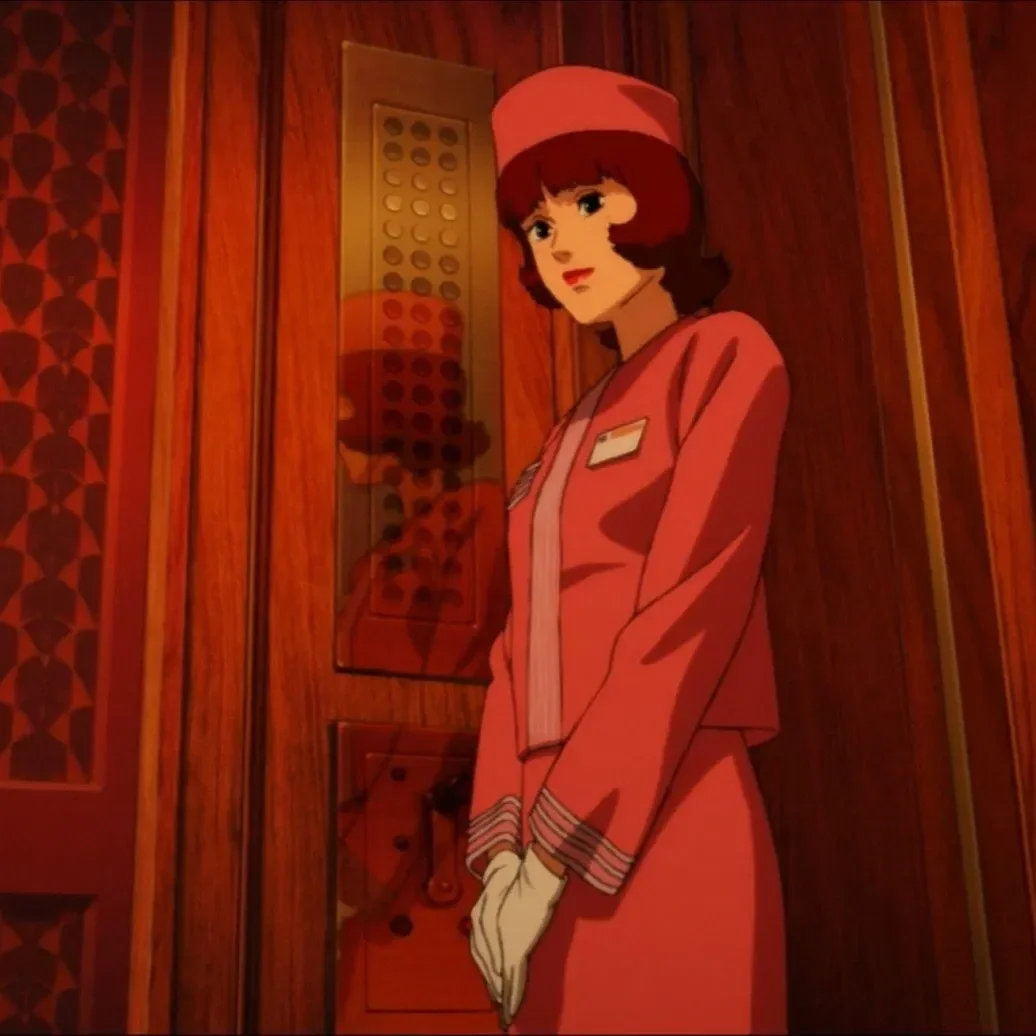From Streets to Screens - Bōsōzoku on Film
God Speed You! Black Emperor│© Mitsuo Yanagimachi
Japan has always been the breeding ground for subcultures that push boundaries. Post World War 2, a wave of rebellious youth emerged, doing things which stood out from the norms of Asian society that they have been induced for. Japan, whose power had been stripped after the war, showed a sense of resistance against its own rigid structure. Motorbikes became more than convenience; they became a symbol of defiance. The roar of their engines, often self-modified, mingled with the changing diaspora of the new emerging society which was undaunted, and which was creating its own language of rebellion. It screamed “freedom” in a society which was weighed down by state-imposed change. The engines were as loud as the changing voices of the youth, and the sound of the streets were soon to shift to a new expression of personal identity.
The Aesthetics of Delinquent Culture
Motorbikes, which were seen as a simple and affordable way to get by, would be transformed to represent the growing youth of Japan. The Bosozoku culture brought with it a community which expressed themselves loudly in the form of modified bikes, which represented individual personality in a collective community. These machines became extensions of personal identity, decked out with bold logos, flashy paint jobs, and most impressively, custom-tuned engines built by teenagers as young as 15, pieced together from spare parts. The iconic raised back seat and distinct fashion made them instantly recognizable, outsiders with style and attitude. This self-expression has served as inspiration for generations to come, especially the evolving media. Since the emergence of the Kaminari Zoku in the '50s, Bosozoku has been a media mainstay, constantly reinterpreted and reimagined through the lens of film, anime, and street culture.
Earliest media mention of the Bosozoku gangs can be traced back to the 70s, following a wave of clashes and riots in Toyama City. With the increase of their uncontrolled rebellious activities, there was police intervention and widespread media coverage. But while the news painted one picture, films and documentaries spun their own versions of their story.
Let’s take a look:
God Speed You! Black Emperor│© Mitsuo Yanagimachi
Godspeed You! Black Emperor
1976
The validity of a subculture's existence is immortalized when a keen observer dedicates themselves to telling their story. With Bosozoku, Mitsuo Yanagimachi produced a body of observation which would immortalize a culture. Godspeed You! Black Emperor is not just a documentary showcasing the biggest motorcycle gang in Japan; the Black Emperors, but it is also raw, unfiltered look into the lives of marginalized, restless youth who found freedom in speed and brotherhood, with nothing but their engines and each other to rely on.
The documentary starts in the midst of chaos, where the Black Emperor gang is getting raided by the cops for breaking laws and causing mayhem. The chaos is exaggerated by fast dialogue, shifting panels between the gang and the heightened chaotic environment, and ends with the delinquents tearing off on their bikes and riding off into the night. The aestheticism of disorder is evident, as Yanagimachi paints them as unapologetically “ubercool” — not just because they’re lawless, but because they stand apart from the mainstream.
Historically, the Black Emperor gang was known for its strict top-down system of gang hierarchy, The gang notoriously followed a fascist system of ruling and was vehemently strict towards its members. Despite their strict system of governance, “misguided” youth navigated towards this community. Unbeknownst to the west, the Black Emperor gang and its depiction by Yanagimachi laid the foundation of motorcycles gangs as we know today.
As the documentary progresses, we see that the members of the Black Emperor come from underprivileged families. In dialogue, we find that most of these boys have not even been to school and some of them are homeless and almost all of them do not have steady jobs. The question then arises, why would they choose the oppressive structure of the Black Emperor over the so-called freedom of society? Why leave whatever little comfort they had to be part of something so much bigger, stricter, and unforgiving? Is the quest for identity more important than the comfort of being where one cannot be themselves? The answer to these questions is simple: The need to belong.
But what makes Godspeed You! Black Emperor timeless? Why do we still continue to think of it? It all comes down to the lasting iconography it left behind and an imprint of a real subculture that broke through narrow perspectives. Godspeed You! did not just show us a low life gang, but introduced the world to an entire community and their unique codes of conduct. Their signature style—tokko-fuku—was more than just fashion. Bandanas, sharp uniforms, leather jackets, shaved eyebrows, crisp denim, perms, buzzcuts—every detail was a statement. It reflected a collision of Western influence and raw Japanese street culture that would later influence the look of the J-rock scene.
Tricked-out Hondas, Suzukis, and Kawasakis ruled the streets, becoming symbols of defiance and a major force in shaping Japan’s underground culture. The gang was united by their motto and insignia, which was a stylized version of a Buddhist Manji. Godspeed You! didn’t just stay on screen—the name was later picked up by a Canadian post-rock band which shows their influence outside Japan.
Along with a cultural shift, there was also a huge shift in the directorial community of Japan as this was Yanagimachi’s first independent project, and showed documentary filmmaking at its core: low-budget, high-impact, and unfiltered.
In the end, it all comes down to reality. The heightened Bosozoku lives of these rebellious teens is quickly contrasted by their less than enthusiastic reality: their apartments are cramped, their families are struggling, they have no money and no means to live a better life. Their lives are not as glamorous or edgy as their motorbikes and their days are spent filling themselves with cup noodles and unfulfilled dreams. If that feeling hits the viewer a little too close to home, it is because it is where most of us have lived as teenagers trying to navigate the world by ourselves. Yanagimachi does not flinch in keeping it real till the end, and that is why the lingering sense of loneliness, aimlessness, and pointless rush sticks with the audience far longer than they like.
The Time We Lived / 俺たちの生きた時間│© Yoshimitsu Watanabe
The Time We Lived
1982
By the 80s, the Bosozoku had already put themselves on the radar. Police crackdowns started to become more frequent as the gangs expanded in number. The 80s saw the highest membership rate the Bosozoku has seen, yet that would not prevent their downfall. All the attention Bosozoku received was quickly picked on by the media, which added to more chaos.
Yoshimitsu Watanabe, the director of this documentary, had a different vocation at first. As a former member of the Black Emperor, Watanabe had the most validity to direct a documentary which shows the dwindling lives of the Bosozoku after their prime has already passed. The documentary, released in 1982, shows Watanabe in 1979 trying to have a last “hurrah” before the inevitable decline sets in. Told through a first-person narrative, it highlights Watanabe’s growing concerns as the gang faces a series of new challenges.
This documentary is different from Godspeed You! in a lot of ways. Godspeed You! captured the fast-paced rise of the Black Emperor gang, their structure, conduct, and unflinching drive as they only seemed to be making their way upwards, unafraid. Fast forward to The Time We Lived, we see that promising glory is a bit diminished by several factors which were not entirely unprecedented. Despite their membership being the highest in the 80s, the gang’s activities were increasingly stifled by law enforcement.
The Bosozoku were on the brink of graduating from their role as the face of one of Japan’s most iconic subcultures, and ironically, it was the government that pulled the plug. New restricting traffic laws would block them from riding as a community through the Japanese roads without consequences. Major crackdowns, especially in places like Toyama, paved the way for stricter road safety regulations that slowly diminished their presence. As this era gradually faded, former Bosozoku members would go on to form the kyukashai, biker gangs who left behind the violent outlaw ways of the Bosozoku.
The new laws would strip away everything the subculture once stood for. Freedom would vanish, replaced by a lingering sense of nostalgia for a wilder time. When Watanabe reconnects with former members, he would find that most of them have not moved on from their days of glory. They are shown attempting to recreate the sense of belonging that came with the Bosozoku through other recreational activities, but these efforts ultimately fail to fill the void left by the absence of revving a modified motorbike through the streets with their gang.
Sayonara Speed Tribes│© Jamie Morris
Sayonara Speed Tribes
2012
“Bosozoku life is risky as hell”
This one line, spoken by the protagonist of Sayonara Speed Tribes: Hazuki, captures the legacy of Bosozoku. Directed by Jamie Morris, an American who spent years immersed in Japanese culture, and wanted to put out to the world a documentary that is a heartfelt ode to a cultural scene he saw as vital to Japan’s rebellious spirit.
Morris found Hazuki as a man of incredible experience and character. Hazuki, who is a kickboxer, used to be an ex Bosozoku member of the gang called Narushino Specter. Hazuki lives in the shadow of his past as a tough Bosozoku crew member and gets to mentoring new pledges who are dwindling and shrinking under the weight of new laws which restrict the movement of the Bosozoku heavily.
The interest taken by Morris is evident as he talks about hearing the loud “roars” of the bikes and their kamikaze style fashion with poetry and slogan stitched on their jackets. Morris found his story through Hazuki, yet Hazuki remains unfulfilled in a life without the speed, rush and community offered by the Bosozoku. Hazuki is the bearer of a life that has already been lived past its prime, yet he finds new ways to keep that youthful fighting spirit in him alive. Yet beneath that tough exterior is a dissatisfaction with his current state of being.
Sayonara Speed Tribes is truly a goodbye to the Bosozoku culture, seen through the eyes of the man who has seen it all, and who has watched it fall. It is a sentimental yet fun-filled homage to the freedom, adrenaline and defiance embodied by the Bosozoku. Yet, the culture still lives on in the minds and the hearts of those who have lived to tell the tale.
Sayonara Speed Tribes│© Jamie Morris
Akira
1988
Neo-Tokyo has become a staple setting across multiple subgenres of speculative fiction—an enduring symbol of chaos, rebellion, and rebirth. But its foundation was laid by Katsuhiro Otomo, who created Akira and even directed the movie which came out in 1988, changing the trajectory of how anime is viewed globally. Set in 2019, Akira shows post World War Tokyo, with a crumbling foundation descending into disorder and chaos.
Akira deals with profound themes of death, rebirth, alienation, political decay etc, but at the core of Akira lies Shotaro Kaneda and his motorcycle gang called the Capsules. Kaneda’s journey begins with navigating the post war Tokyo which has risen from the ashes and turned into something cruel and unforgiving. Kaneda’s journey might come off as a battle to confront the growing violence and unstable lifestyle that comes with Neo Tokyo, but it transforms into a battle against something more elemental and universal.
Kaneda’s journey can be boiled down to a navigation of one’s position in a world which has already failed them, and Kaneda does this only with his bike, his gang, and his best friend by his side. We all know this story, because this is the story of the human condition in a society which has no place for its youth, something which also represents the core of Bosozoku, and their quest for belonging.
Without Bosozoku, Akira’s plotline would be missing the key engines for its turnaround. Kaneda and his bike are a symbol of the subculture that Otomo wants to show to the rest of the world. Neo-Tokyo is mystical, filled with scientific progress that often doesn’t make sense—both to the viewer and to its own residents. However, Otomo strived for realistic characters in an unrealistic hyper idealized cyberpunk setting, and his inclusion of the Bosozoku subculture makes the characters of Akira relatable, as they are all young people searching for something- escaping the ashes of the old Tokyo and trying to keep up with the new.
The Bosozoku slogan, the modified bikes, the tokko-fuku garb, and the sense of community that we have discussed before, find its way into the new Tokyo. In reality and in fiction, Bosozoku is born from the destruction of established society and its ideals as we know it, but in Akira, which is set in the future (from when it was released), Otomo shows us that the society that is rebuilt from the ashes of its previous ones is not better, but darker, more sinister. Hence, Kaneda isn’t just pushing back against alienation, political chaos, and being at the bottomless pit of society, he is also fighting for his right to exist in a world which does not care if he lives or dies as he is just is cog in the big elemental plot that is to unfold. For him, it is his bike, and Tetsuo; his best friend, around which the entirety of the plot hinges, more so than the existence of the mystical “Akira”. In the end, it all comes down to the rawest of human connections, which in history held the Bosozoku together, and in Akira gave hope to Kaneda to keep moving forward.
AKIRA│© Katsuhiro Otomo
Global Influence
The legacy of these youngsters echoes through fashion, music, cinema, and many pop culture iconographies. You see it in the stitched kanji on a streetwear brand in Brooklyn, in the cyberpunk dreams of Akira, and even in Goli Mandu, a motorcycle gang hailing from Kathmandu, Nepal.
The Goli Mandu follow the structure and lifestyle of Bosozoku without the violence and anarchy. They focus on charity and giving back to the community. Having amassed over 10K followers on social media from all over the world, they have a strong fanbase and have solidified their presence in their city and outside as well. Their motto; ‘Unity is Key” resonates through the community that they have built, and is also a nod to the Bosozoku code of conduct. They also have their own merchandise and insignia, solidifying their identity and influence, paying homage to the culture that came before them and laid the blueprint for them.
And that’s the truth of subcultures. The original form may burn out, but the energy mutates. While breaking the rules of the road, Bosozoku rewrote the rules of youth culture, all whilst showing its surroundings how to live loudly in a society that prefers its people quiet.












Paprika is back, leading PARCO’s Grand Bazar.